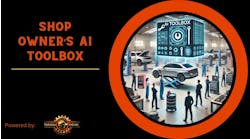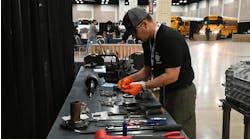There is wide variety of power and pneumatic (powered by compressed air) tools available, each intended for particular work. Consequently, selecting the appropriate tool requires careful deliberation.
Regardless of the type of tool to be acquired, it is wise to look for features that will suit vehicle repair and maintenance needs, plus make the tool easier and safer to use.
Technicians need to understand that the speed generated by the air pressure of a pneumatic (air) tool can present safety concerns. Like any tool, these should only be used for their intended purpose, and technicians need to have a proper understanding of the operation of the tool and follow all manufacturers’ warnings
Shields, guards, or other safety devices never should be removed from a tool and the appropriate PPE should always be worn.
It is estimated that power tool injuries account for as many as 400,000 annual emergency room visits, according to the Occupational Safety and Health Administration (OSHA).
CHECKLIST
Some general key purchasing considerations:
- Style, size, and weight.
- Portability.
- How much power/torque is required?
- Is there a need for variable speed control?
- Corded or cordless (for power tools).
- For cordless tools, what type of battery is included? Battery type determines how long the battery provides power and how much time is required for recharging.
- For pneumatic tools, keep in mind that every air tool has an operational compressed air requirement – measured in cubic feet per minute (cfm) – and every air compressor has a maximum cfm output. The air compressor’s cfm output must be greater than the cfm requirement to keep all the pneumatic tools in the shop operating efficiently.
- Power trigger type.
- Handle shape, size, length, material, etc.
- Ergonomics. Does the tool have features that increase worker performance and productivity while reducing discomfort, fatigue and risk of injury?
- Noise level.
- Vibration.
- Safety features.
- Accessories.
- Quality.
- Warranty/guaranty.
- Product support.
- Brand reputation.
- Budget range/price.




